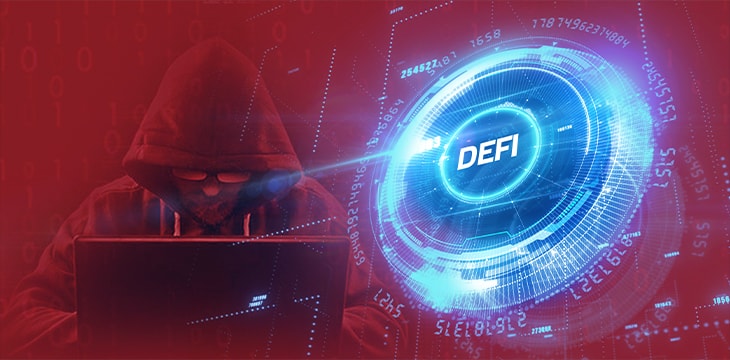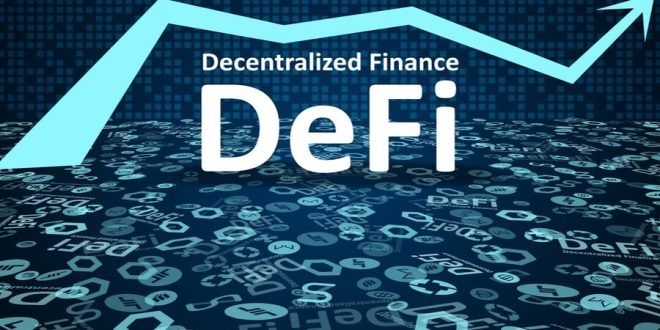Decentralized finance (DeFi) has emerged as a revolutionary force in the financial industry, providing individuals with open, permissionless, and borderless access to financial services. By utilizing blockchain technology, DeFi platforms aim to democratize finance, offering users various opportunities such as lending, borrowing, yield farming, and decentralized exchanges. However, along with the promise of decentralization and financial inclusivity, DeFi platforms also present significant security risks that users and developers must be aware of.
Introduction
Decentralized finance, often referred to as DeFi, encompasses a wide range of financial applications built on blockchain networks. Unlike traditional centralized financial systems, DeFi platforms operate without intermediaries, allowing users to interact directly with smart contracts and transact value peer-to-peer. This innovation has led to an explosion of DeFi projects and the proliferation of decentralized applications (DApps) in recent years.
Overview of Security Risks in DeFi Platforms

Despite the potential benefits of DeFi platforms, they are not without risks. Let’s explore some of the key security risks associated with these platforms.
1. Lack of regulatory oversight
One of the significant challenges with DeFi platforms is the lack of regulatory oversight. Unlike traditional financial institutions, DeFi projects often operate in a decentralized and permissionless manner, making it difficult for regulators to enforce compliance and protect users’ interests. This regulatory gap exposes users to potential fraud, market manipulation, and other illicit activities.
2. Smart contract vulnerabilities
Smart contracts, the self-executing agreements that power DeFi platforms, are susceptible to vulnerabilities. Coding errors or vulnerabilities in the underlying blockchain platform can lead to significant security breaches. Exploiting these vulnerabilities, malicious actors can manipulate smart contracts, drain funds, or disrupt platform operations.
3. Malicious actors and hacking attempts
DeFi platforms attract the attention of malicious actors seeking to exploit vulnerabilities and steal users’ funds. Hackers employ various tactics, including direct attacks on smart contracts, exploiting weaknesses in the underlying infrastructure, or targeting individual users through phishing and social engineering attacks.
4. Phishing and social engineering attacks
Phishing attacks, where attackers impersonate legitimate platforms or individuals to trick users into revealing their private keys or passwords, pose a significant risk in the DeFi ecosystem. Social engineering techniques, such as impersonating support staff or community members, can deceive users into providing sensitive information or granting access to their wallets.
Regulatory Challenges and Risks
The decentralized nature of DeFi platforms presents unique regulatory challenges and risks that users must be aware of.
1. Lack of legal protection for users
As DeFi platforms operate outside the traditional regulatory frameworks, users may not have the same legal protections or recourse in the event of fraud or loss. This lack of legal clarity and consumer protection measures leaves users vulnerable to potential risks associated with DeFi platforms.
2. Regulatory uncertainties and gaps
Regulatory authorities are still grappling with how to regulate DeFi platforms effectively. The absence of clear guidelines and standards leaves users and developers uncertain about compliance requirements, which could lead to unintended legal consequences or regulatory backlash.
3. Money laundering and fraud risks
The pseudonymous nature of blockchain transactions opens avenues for money laundering and other fraudulent activities. Without proper Know Your Customer (KYC) and Anti-Money Laundering (AML) procedures, DeFi platforms may inadvertently facilitate illicit transactions, posing risks to both users and the broader financial system.
Smart Contract Risks
Smart contracts, the backbone of DeFi platforms, introduce their own set of risks and vulnerabilities.
1. Complex coding and potential bugs
Smart contracts are often complex and written in programming languages like Solidity. Coding errors or logical flaws can lead to unexpected behavior and create opportunities for attackers to exploit vulnerabilities. Thorough code reviews and auditing processes are essential to minimize these risks.
2. Solidity programming language vulnerabilities
Solidity, the programming language used for writing smart contracts on the Ethereum blockchain, has its own set of vulnerabilities. Developers must be aware of these vulnerabilities, such as reentrancy attacks, integer overflow/underflow, and other potential pitfalls, and implement proper mitigation strategies.
3. Upgradability risks and decentralized autonomous organizations (DAOs)
Some DeFi platforms allow for upgradability of smart contracts, which can introduce risks if not implemented correctly. If an upgrade mechanism is compromised, attackers can exploit it to introduce malicious code or drain funds. Additionally, decentralized autonomous organizations (DAOs) pose governance risks, where voting mechanisms can be manipulated to achieve malicious outcomes.
Hacking and Exploitation Risks
The allure of DeFi platforms and the value they hold make them prime targets for hackers and exploiters.
1. Flash loan attacks
Flash loans, a feature unique to DeFi platforms, allow users to borrow large sums of assets without collateral as long as they repay the loan within the same transaction. While this innovation has unlocked new possibilities, it has also given rise to flash loan attacks, where attackers exploit arbitrage opportunities or manipulate prices to their advantage.
2. Centralized oracle vulnerabilities
DeFi platforms often rely on external sources of information, known as oracles, to interact with real-world data. However, centralized oracles can become single points of failure and introduce vulnerabilities. Manipulating or compromising these oracles can result in inaccurate data being fed into smart contracts, leading to financial losses or other adverse consequences.
3. Governance manipulation and voting attacks
Decentralized governance mechanisms, such as token-based voting systems, are susceptible to manipulation. Attackers can accumulate a significant amount of tokens or collude with others to gain control over the governance process. This control can be used to manipulate voting outcomes, change protocol rules, or drain funds.
User Risks and Mitigation Strategies
While DeFi platforms offer new opportunities, users must be mindful of the risks involved and take necessary precautions.
1. Custodial risks and centralized exchanges
Some DeFi platforms require users to custody their assets on centralized exchanges, which introduces counterparty risks. Users should carefully assess the security measures implemented by these exchanges and consider non-custodial alternatives where they retain full control over their assets.
2. Importance of secure wallets and private keys
Maintaining control over private keys and using secure wallets is crucial in the DeFi ecosystem. Users should use hardware wallets or well-audited software wallets and follow best practices, such as enabling two-factor authentication and avoiding the exposure of private keys.
3. Due diligence when choosing DeFi platforms
Users should conduct thorough due diligence before engaging with any DeFi platform. This includes researching the team behind the project, assessing the platform’s security measures, reviewing audits and security disclosures, and considering the platform’s track record and reputation.
Security Audits and Best Practices
To enhance the security of DeFi platforms, developers and users should follow industry best practices and undergo rigorous security audits.
1. Importance of third-party audits
Engaging reputable third-party auditors to review smart contracts and platform security is essential. These audits can identify vulnerabilities, suggest improvements, and provide assurance to users about the platform’s security measures.
2. Code reviews and bug bounties
Regular code reviews by experienced developers can help identify potential issues early on. Establishing bug bounty programs incentivizes the wider community to actively participate in identifying vulnerabilities, further enhancing platform security.
3. Implementing multi-signature wallets
Multi-signature wallets, which require multiple parties to sign off on transactions, provide an additional layer of security. Implementing multi-signature wallets for managing platform funds can mitigate the risk of a single point of failure or malicious actions by an individual.
Regulatory Developments and Future Outlook
The regulatory landscape for DeFi platforms is rapidly evolving as regulators strive to strike a balance between fostering innovation and protecting users.
Privacy Risks and Concerns
1. Transparency of blockchain transactions
Blockchain technology, which underlies DeFi platforms, is designed to provide transparency by recording all transactions on a public ledger. While this transparency is a key feature of blockchain, it also raises privacy concerns. The pseudonymous nature of blockchain transactions means that anyone can view transaction details, including wallet addresses and transaction amounts. This can potentially compromise the privacy of users and expose their financial activities to prying eyes.
2. De-anonymization risks
Although blockchain transactions are pseudonymous, it is still possible to de-anonymize users under certain circumstances. By analyzing transaction patterns, network activity, and other available data, it may be possible to link transactions to specific individuals or entities. This de-anonymization process can be concerning for individuals who value their privacy and wish to keep their financial activities separate from their real-world identities.
3. Privacy-enhancing technologies in DeFi
To address privacy concerns in DeFi, developers are exploring privacy-enhancing technologies. These technologies aim to provide users with greater control over their personal information and transactional privacy. Techniques such as zero-knowledge proofs, ring signatures, and secure multi-party computation are being utilized to enable private transactions and protect sensitive data. Implementing these technologies in DeFi platforms can offer users a higher level of privacy without compromising the integrity and transparency of the underlying blockchain.
Economic Risks and Market Volatility
1. Price manipulation and market manipulation
DeFi platforms, like any financial market, are not immune to price manipulation and market manipulation. The decentralized and relatively nascent nature of DeFi makes it susceptible to manipulative practices. Market participants with large holdings of certain tokens can potentially influence prices through coordinated buying or selling, leading to artificial price movements. It is crucial for users to be aware of these risks and conduct thorough research before participating in DeFi markets.
2. Liquidity risks and impermanent loss
Liquidity risks are inherent in DeFi platforms, especially in decentralized exchanges and liquidity pools. When users provide liquidity to these pools, they are exposed to the risk of impermanent loss. Impermanent loss occurs when the value of the provided assets diverges from the value of the assets held outside the pool. This loss arises due to the volatility of the underlying assets and can affect the overall return on investment for liquidity providers.
3. Impact of external factors on DeFi platforms
DeFi platforms are influenced by external factors, such as market conditions, regulatory announcements, and macroeconomic events. Sudden shifts in the broader financial landscape can have a significant impact on the stability and performance of DeFi platforms. Users must understand that DeFi investments are not isolated from the larger market dynamics and should consider the potential impact of external factors on their positions.
Conclusion
Decentralized finance (DeFi) platforms offer exciting opportunities for individuals to participate in a permissionless and open financial system. However, it is crucial to be aware of the security risks associated with these platforms. Lack of regulatory oversight, smart contract vulnerabilities, hacking attempts, and user risks all pose challenges that must be addressed for the long-term success and adoption of DeFi. By implementing proper security measures, conducting audits, and staying informed about regulatory developments, users and developers can navigate the DeFi landscape with greater confidence.

I’m a highly experienced and successful crypto author who has helped thousands of people to invest in cryptocurrencies. I have a good knowledge and experience in the industry, and I have always been up-to-date with the latest developments. I’m a highly respected member of the crypto community, so if you are looking for someone to help you navigate the world of cryptocurrencies, then you can always contact me.
 Crypto Print
Crypto Print

